"I didn't dare hope."
When Domaac's* village was attacked, he didn't know if his mum was dead or alive. After four long years, Save the Children brought them together again.

Akobo County, South Sudan
January 2019
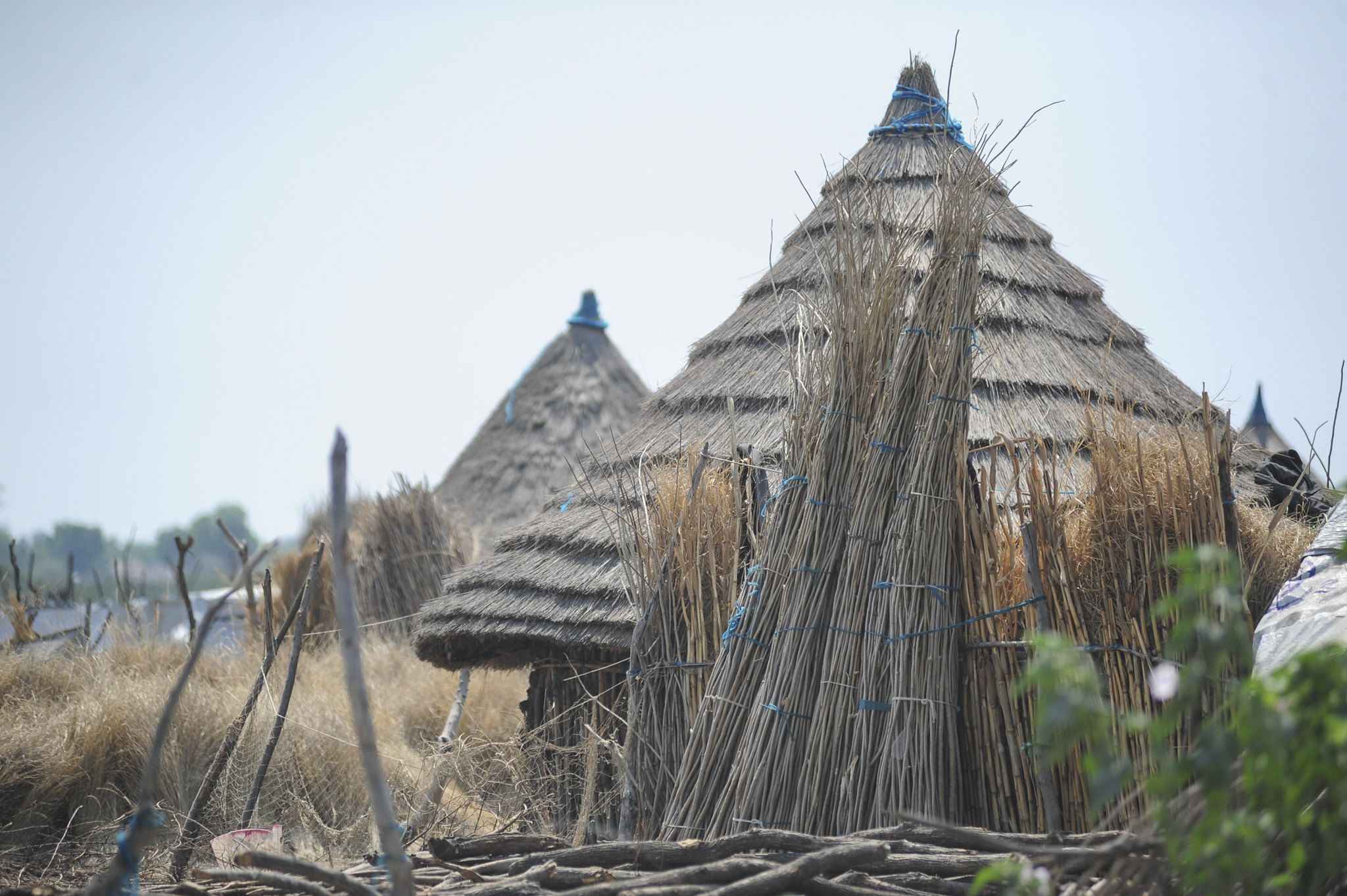
The rainy season was over. With dry weather approaching, a group of villagers were herding their cattle closer to the river.
The attack was sudden and brutal. The rebels started shooting at anyone they saw. It was carnage.
Domaac ran from the gunfire as fast as he could. Soon, he joined a group of children and adults who had come the same way. His mum and brother, Nhial* were nowhere to be seen.
“I was always unsure whether I should turn back, but I was afraid that my mother and brother had been killed during the attack,” says Domaac.
For three weeks, Domaac and his group kept travelling. The sun was scorching, with little shade from the low bushes in the scrub landscape. They shared whatever food they found.
Then, after three weeks, they came to a safe village. When Domaac mentioned surname to someone, they told him a distant cousin of his lived nearby.
His cousin's wife took Domaac in. He was grateful, but couldn't stop worrying about his mum and brother.
In his new village, Domaac became close with his foster brother, Kwoth*. They hung out non-stop, and started going to school together.
Save the Children runs a child friendly space in the village, where children affected by conflict can learn, play, and just forget about their situation, for a little while at least. Domaac and Kwoth decided to check it out.
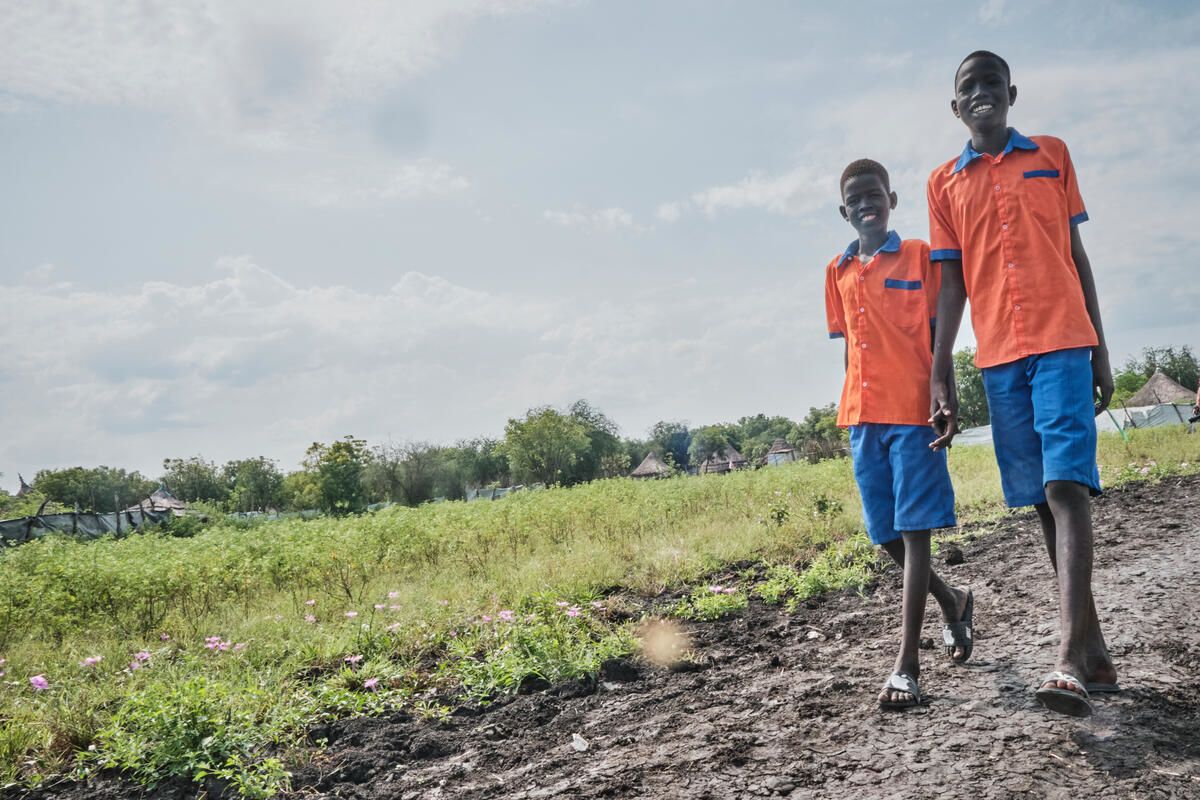
They visited our safe space three times every week, playing games, and speaking with Save the Children who are there to help them come to terms with the horrible things they've been through.
Then, after years of worrying, Domaac managed to contact his family. His mum and his big brother were alive.
But even with the enormous relief of knowing they were okay, he knew both distance and danger meant he wouldn't make it home alone.
“What’s wrong?”
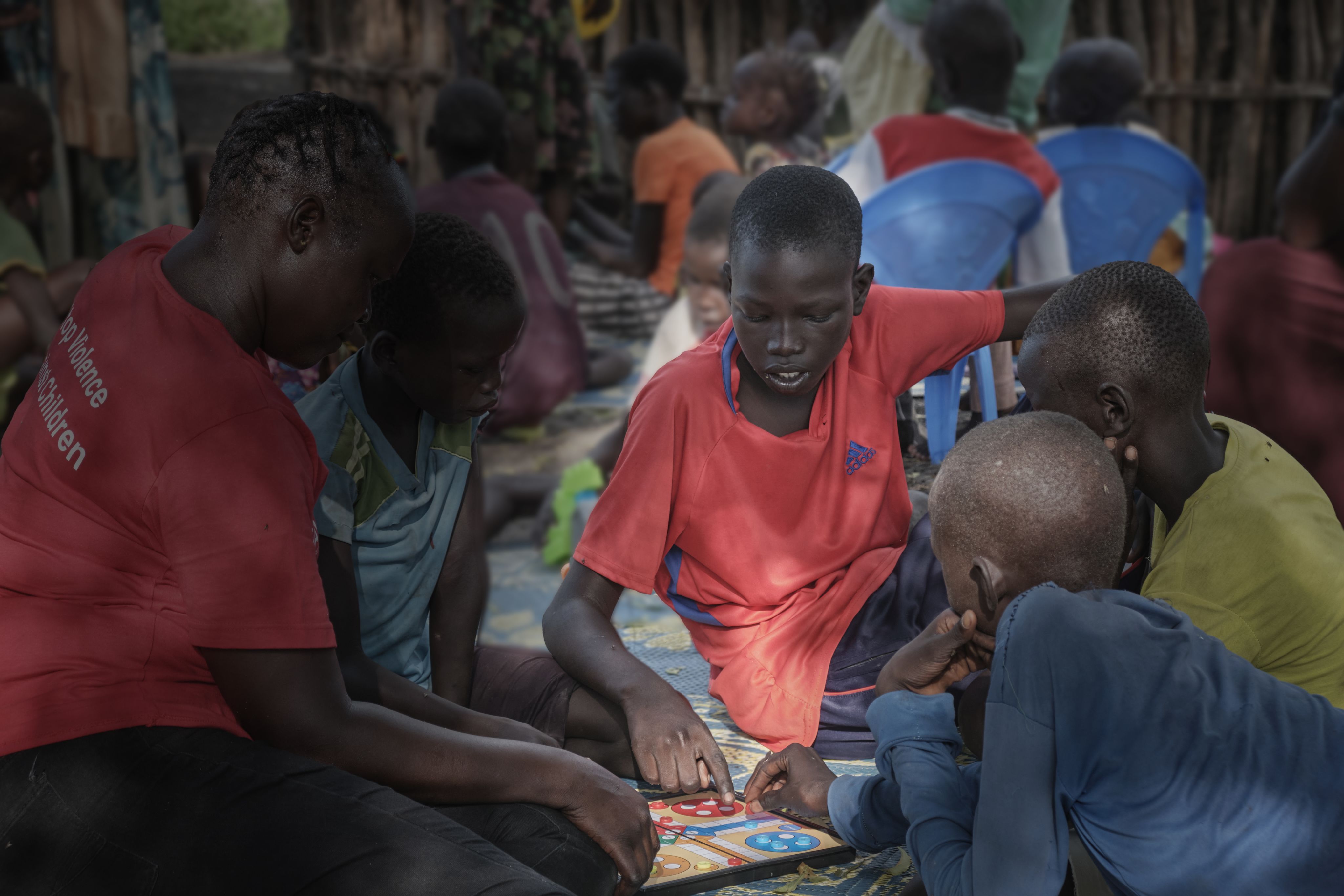
Victoria, a Save the Children caseworker, first met Domaac in 2022. When she asked him “what’s wrong?” Domaac explained everything. He told her he was afraid that she wouldn’t accept his story - that she would think him too young to be believed. Almost as proof, he showed some of his physical scars, and became emotional.
Like Domaac, Victoria is from Akobo Country. She knows the conflict there first-hand, and she's dedicated to protecting children like Domaac.
“I told him not to worry,” says Victoria. “I said we’ll take care of you and bring you to your mum.”
She immediately told our child protection specialists that Domaac had been separated from his family.
Save the Children has a big family tracing and reunification programme in South Sudan, where longstanding conflicts have forced thousands of people from their homes, and so many families have been separated in the chaos.
Saying goodbye
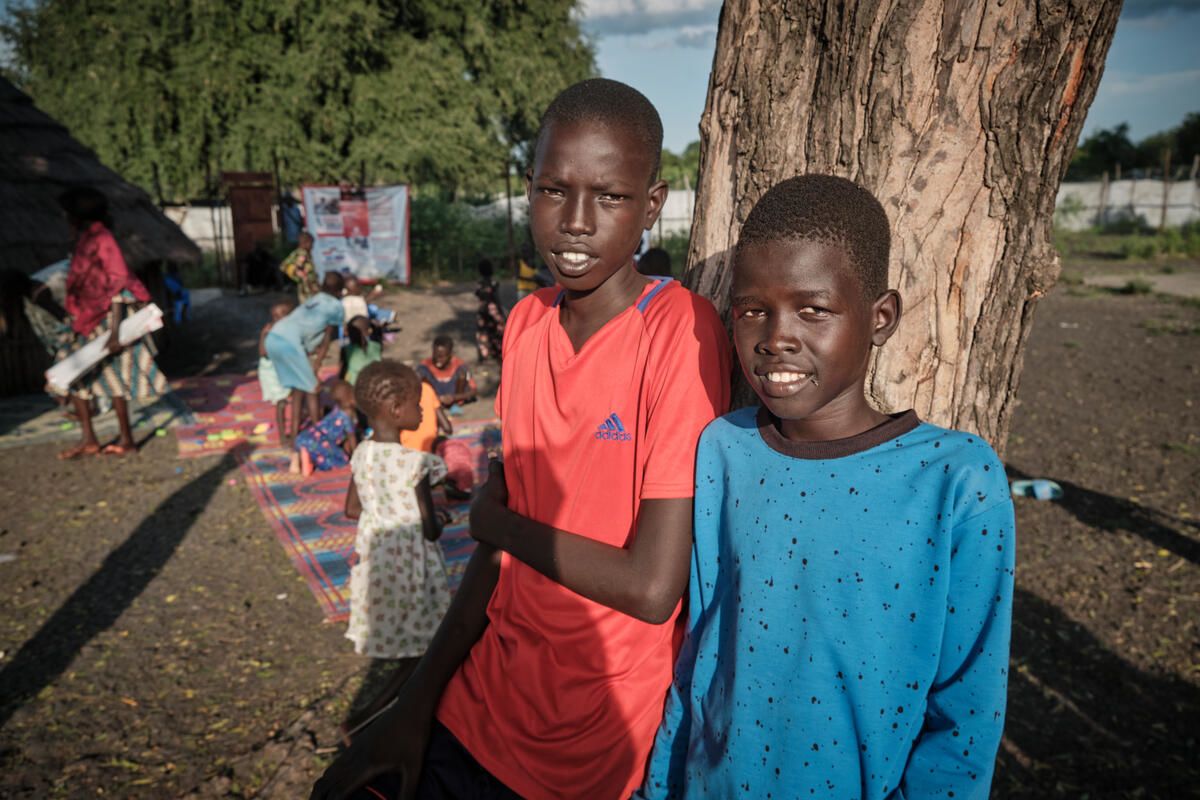
After four long years, the day came for Domaac's return.
Domaac and Kwoth, now both 14, had become best friends, almost brothers.
“I’m very happy for Domaac,” said Kwoth. But despite their emotional bond, the distances between their villages are so vast, no one can say when – or even if – they’ll meet again.
Lift off
The two 14-year-olds exchanged glances, but not many words. Domaac, in particular, was affected by the seriousness of the moment. He was going home, to his mum and brother. Family he hadn’t seen in four years.
The roads in Jonglei State are barely passable most of the year, so Domaac's long journey started by riverboat, then a helicopter, a plane, and finally a car.
In collaboration with UNICEF, we arranged for Domaac to fly with the UN's helicopter and air service. He was accompanied by Toang, who leads Save the Children's work on family tracing and reunification in South Sudan.
At the airfield, Kwoth smiled and waved, before Domaac disappeared behind the enormous Russian Mil helicopter, and bounced up the steps.
He gazed through the window as the helicopter picked up speed. First, they flew to the capital, Juba, then on to Domaac’s village in Akobo.
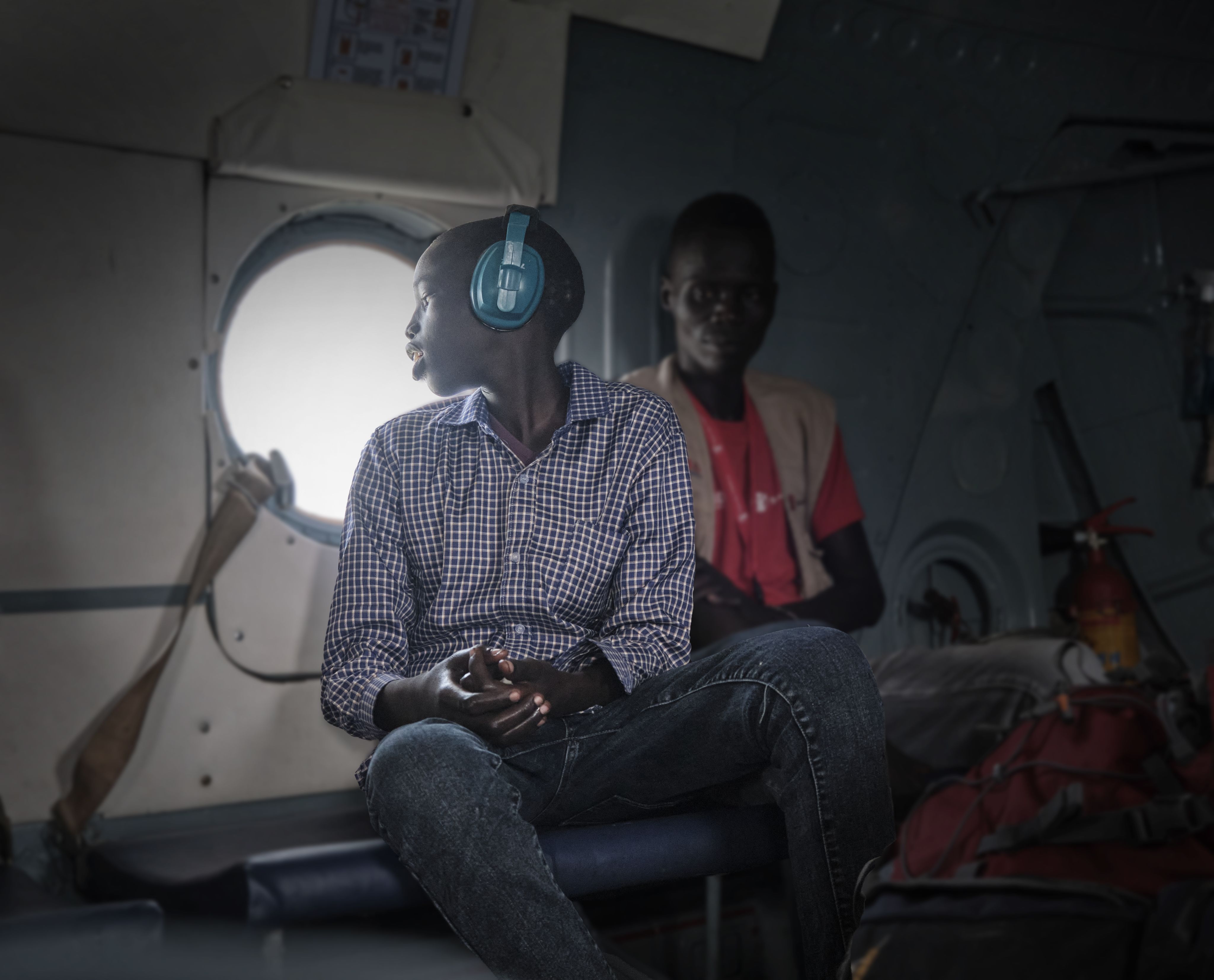
“Before I met anyone from Save the Children, I was afraid that I’d never see my mother again. I didn’t dare hope that it would happen.”
After several hours in the air, Domaac was welcomed by Nyabuony, one of Save the Children's field workers in his home village. Together, they took the last leg of his journey in our car.
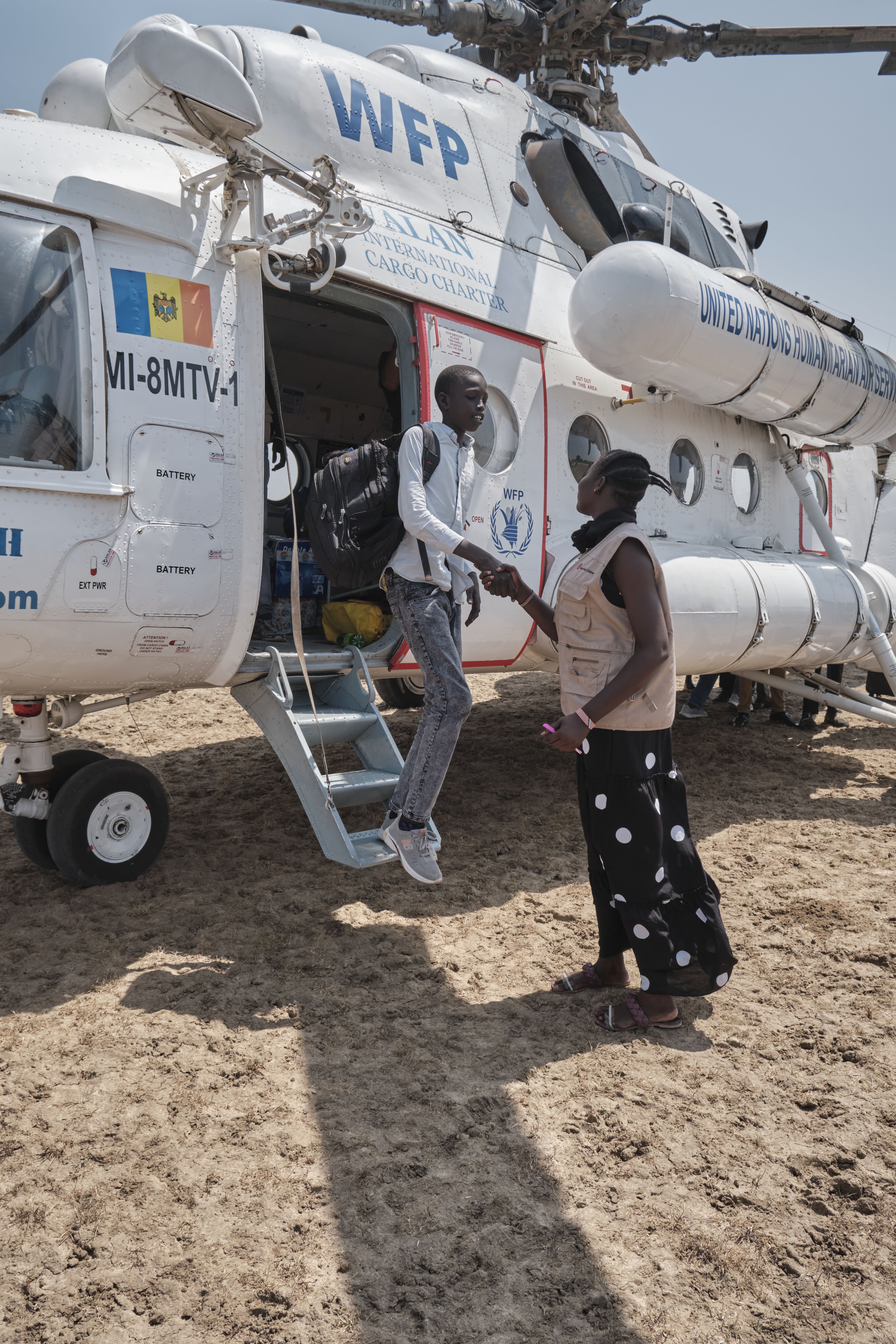
“My son! My son!”
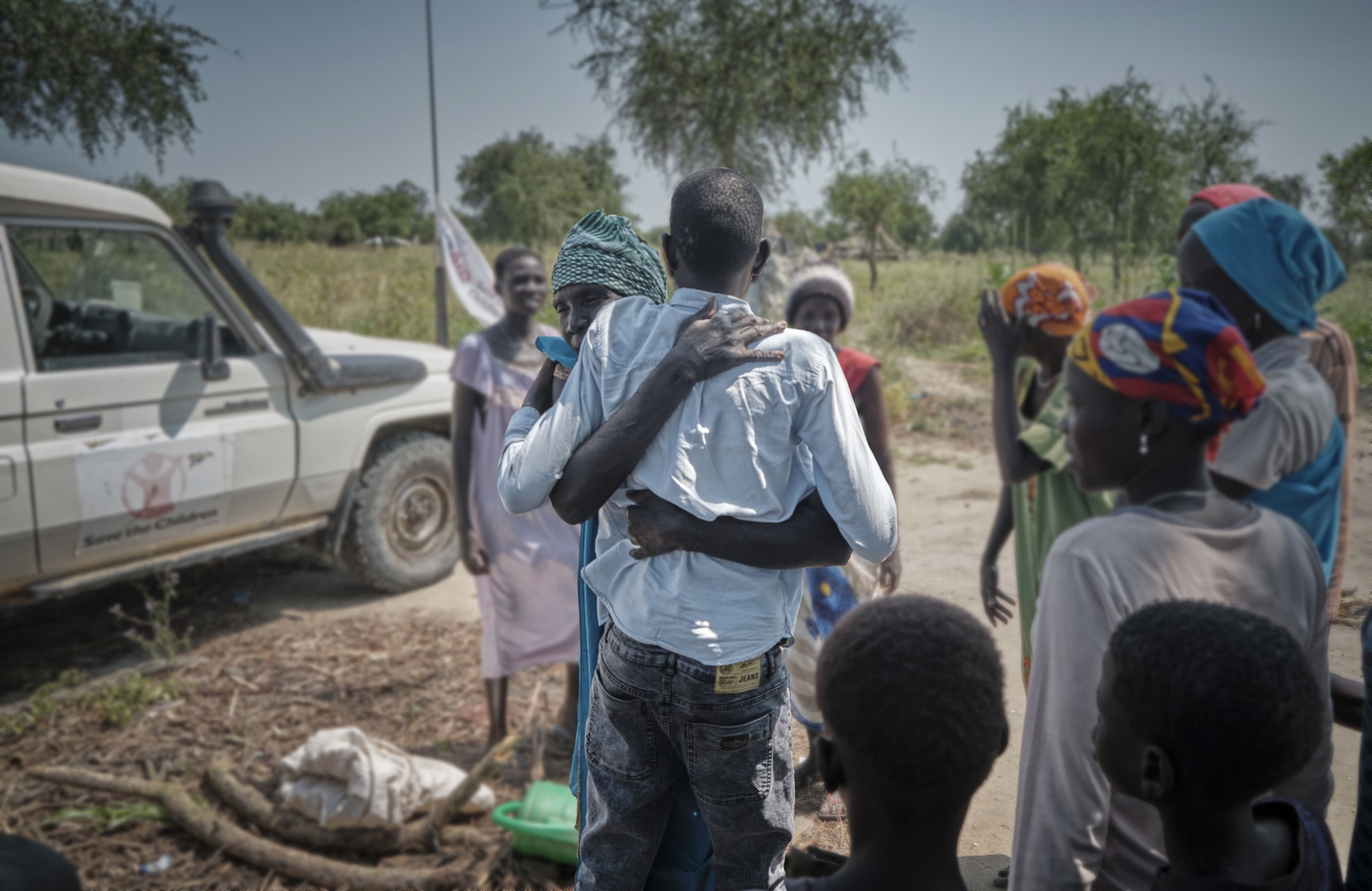
Home at last
Family, friends, and neighbours rushed to Domaac as he stepped out of the car. His mother held back a little; he ambled over, and they hugged for the first time in four years.
“My son! My son!” she exclaimed as they embraced. People around them started to dance.
“I’m incredibly happy that he’s back, healthy and well in front of me!” said his mum. She gathered the other women to pray to give thanks for her son's return.
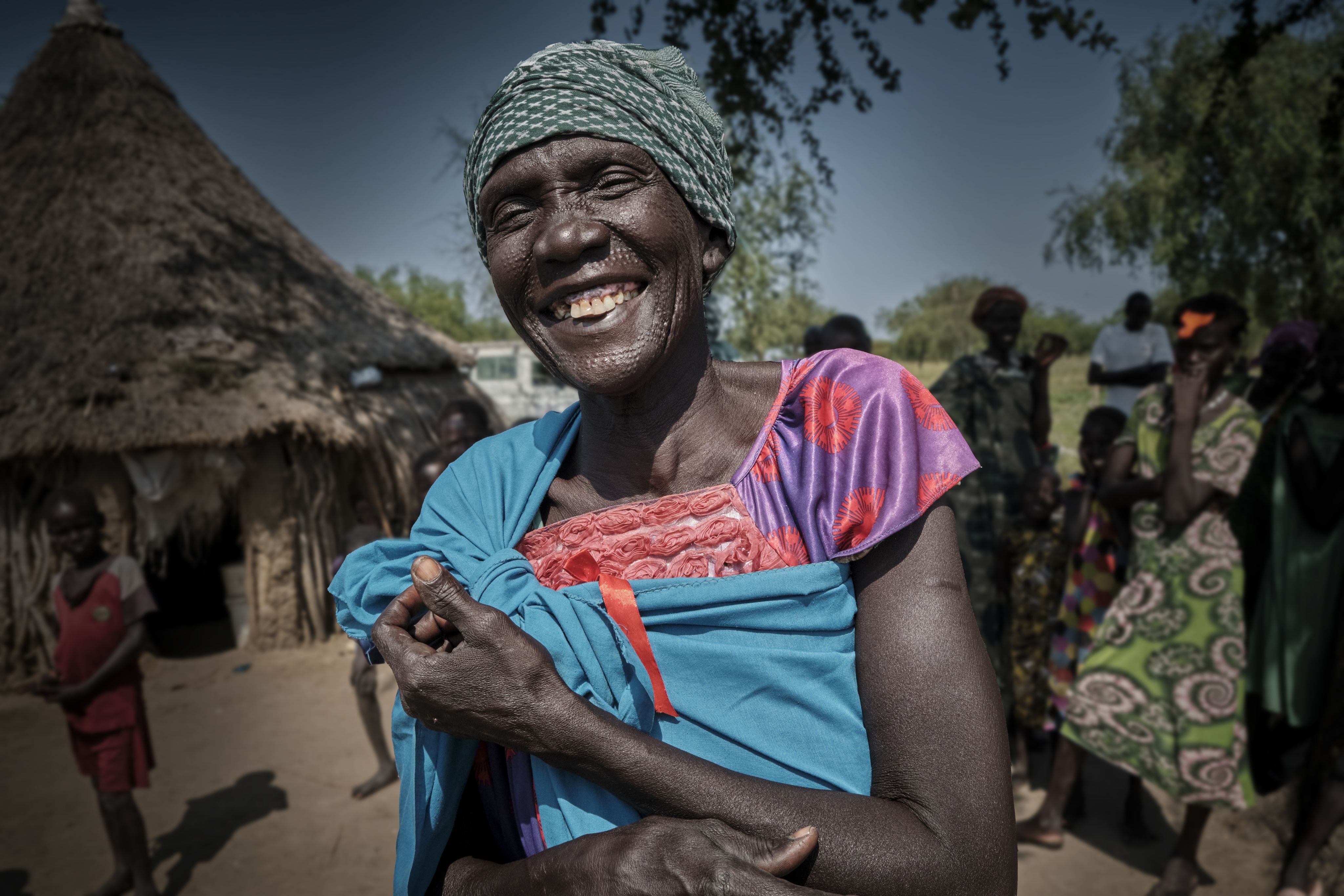
“I thought he was dead”
“I thought he was dead. Many people were killed and injured that day,” said Domaac’s mum.
“I haven't been happy since that day. Even though we had contact through mobile phones, I didn’t know how we could meet again.”
Living in pain
Once home, Domaac learned more about what happened on the day the rebels attacked. His older brother Nhial, who was tending cattle at the time, only just survived. Several of the men he was with were killed.
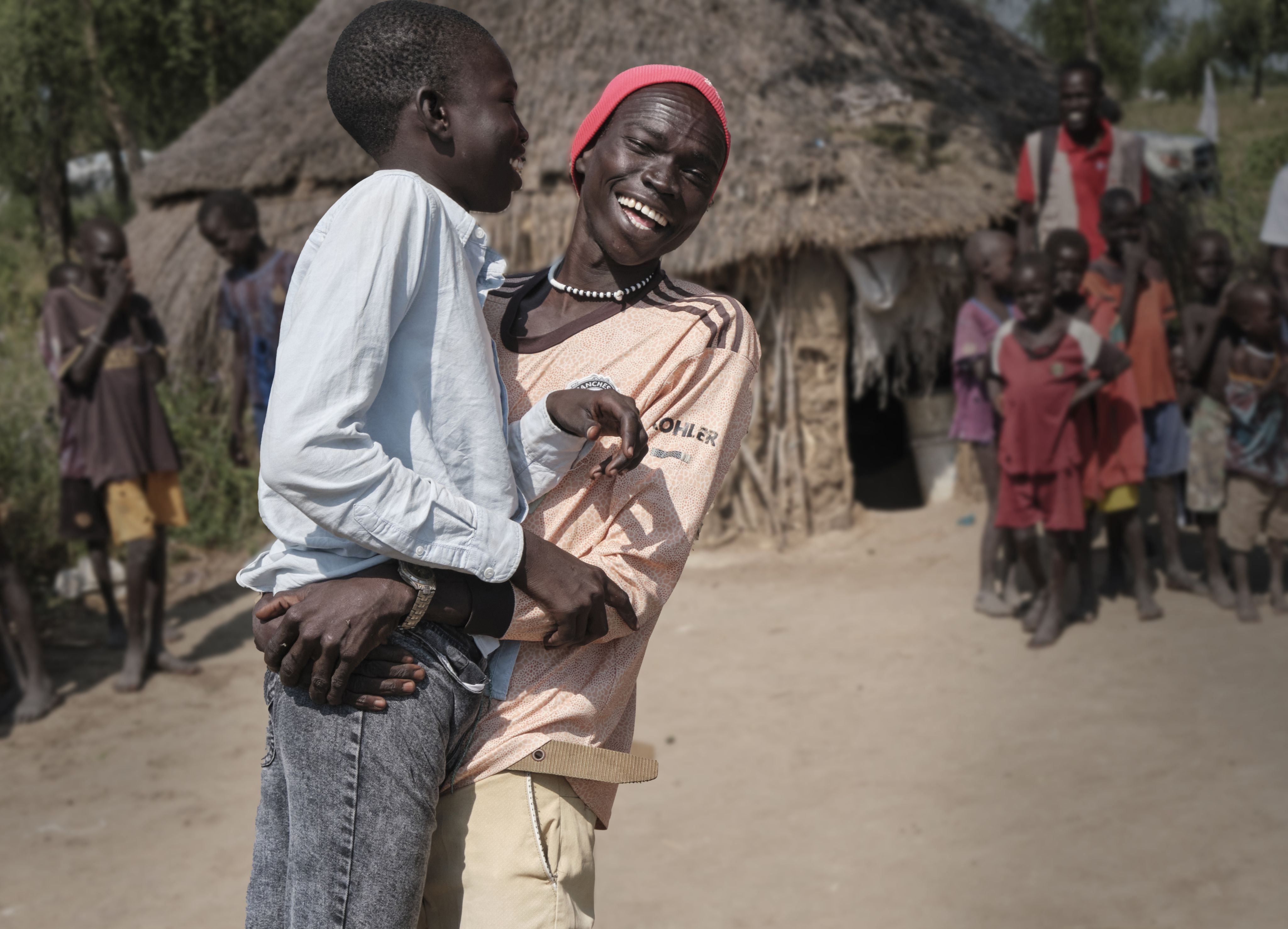
"He looks the same, but he has grown so tall!" says Domaac's proud big brother, Nhial.*
"He looks the same, but he has grown so tall!" says Domaac's proud big brother, Nhial.*
“When the attack happened, and Domaac got separated from the family, I was extremely unhappy and very angry,” says Nhial. “In my silent mind, I considered going to look for him, but I was powerless. Mum also went missing at first but fortunately returned quickly.”
“I have been really worried about him. Since that day, I’ve been living in pain. I was never happy.”
The future
The family are back together again. But life’s still not easy here. Every single day their community has to contend with conflict, drought, flooding, lack of jobs, and scarce health and education facilities.
Neither Domaac’s mum or brother have steady employment, and they no longer have their herd of cows. They sustain themselves by growing with their own crops, picking fruit from the trees, and hunting wild animals.
“I want Domaac to get an education in the future,” says Domaac’s mum. The village school is quite far from their house, but Save the Children will help him enrol and support him to settle in.
When we asked Domaac if he feels a desire for revenge against the rebels who attacked the village, he says, “No, that's just how people live. It's not possible to punish them.” Just two weeks earlier, civilians were killed in a nearby attack.
But for now, on the day of Domaac’s return, the celebrations are just getting going, with dancing around the village tree, while Nuer songs fill the afternoon air.
Domaac is home again.
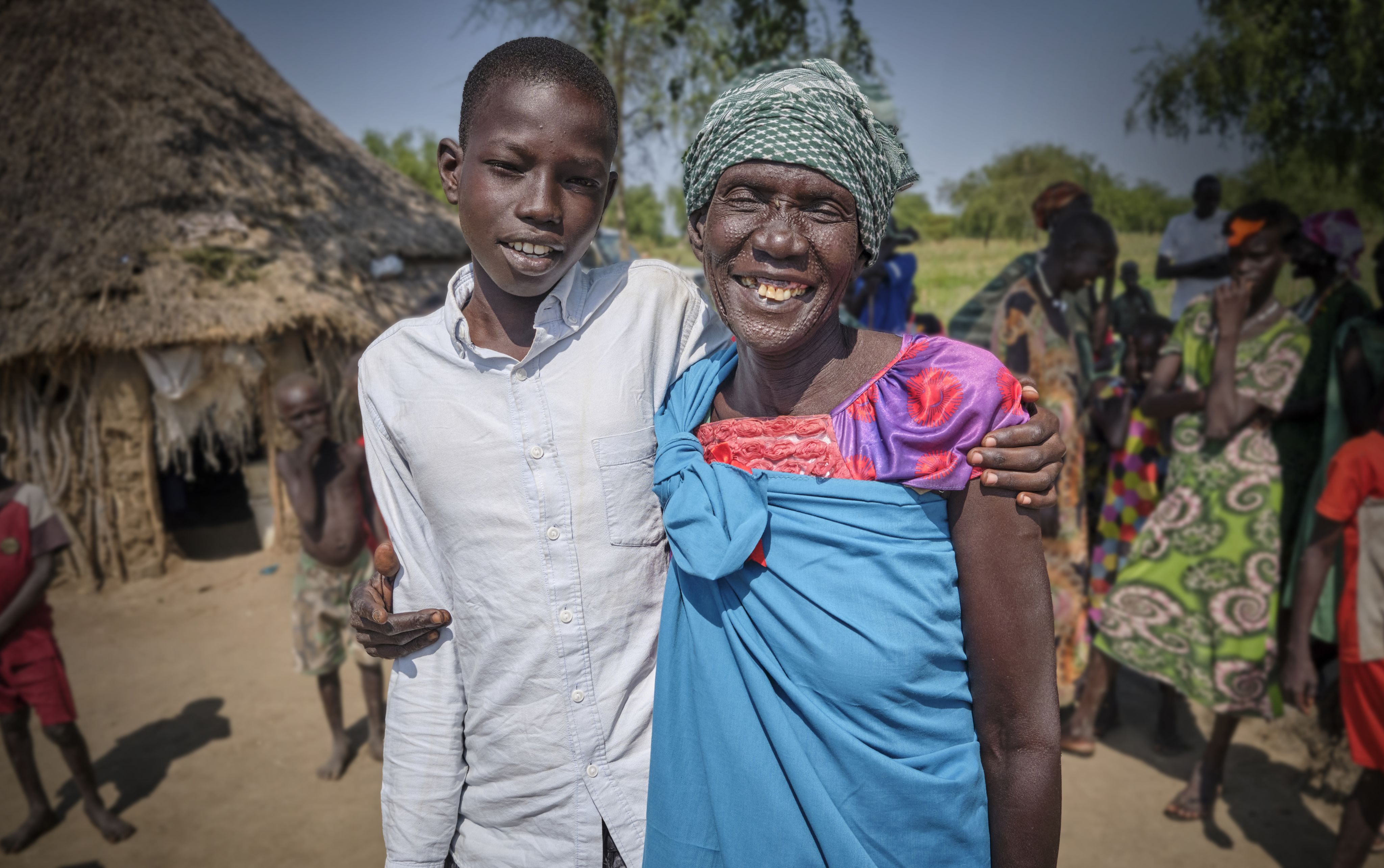
Behind the story

South Sudan has been plagued by civil war since – and before – it gained independence in 2011. A fragile peace agreement is in place, but it doesn't prevent conflict across geographical and ethnic lines.
Millions of people have been killed, injured, or forced to flee over the years. Women and children, in particular, are vulnerable to violence and abductions.
“The situation for children is alarming," says Yine Beatrice, who heads up the national database of 13,000 separated children and their families. "Fortunately, people understand that children must be reunited with their families.”
“Domaac has been away from his family for over three years. He’s adapted to his foster family,” says Beatrice. “He’s excited to go home, but it may pose some challenges. We need to help him get into the new school and find safe play areas. Then he’ll be successfully integrated again.”
An huge team effort
Save the Children has a dedicated team of field workers who focus on child protection, family tracing and reunification. Many of them come from the area so they understand the conditions children face first-hand.
The work of reuniting families in South Sudan has been ongoing since 2013. It's unique on an international level, with 32 organisations involved.
Domaac is the 6,736th child to be reunited with his family.
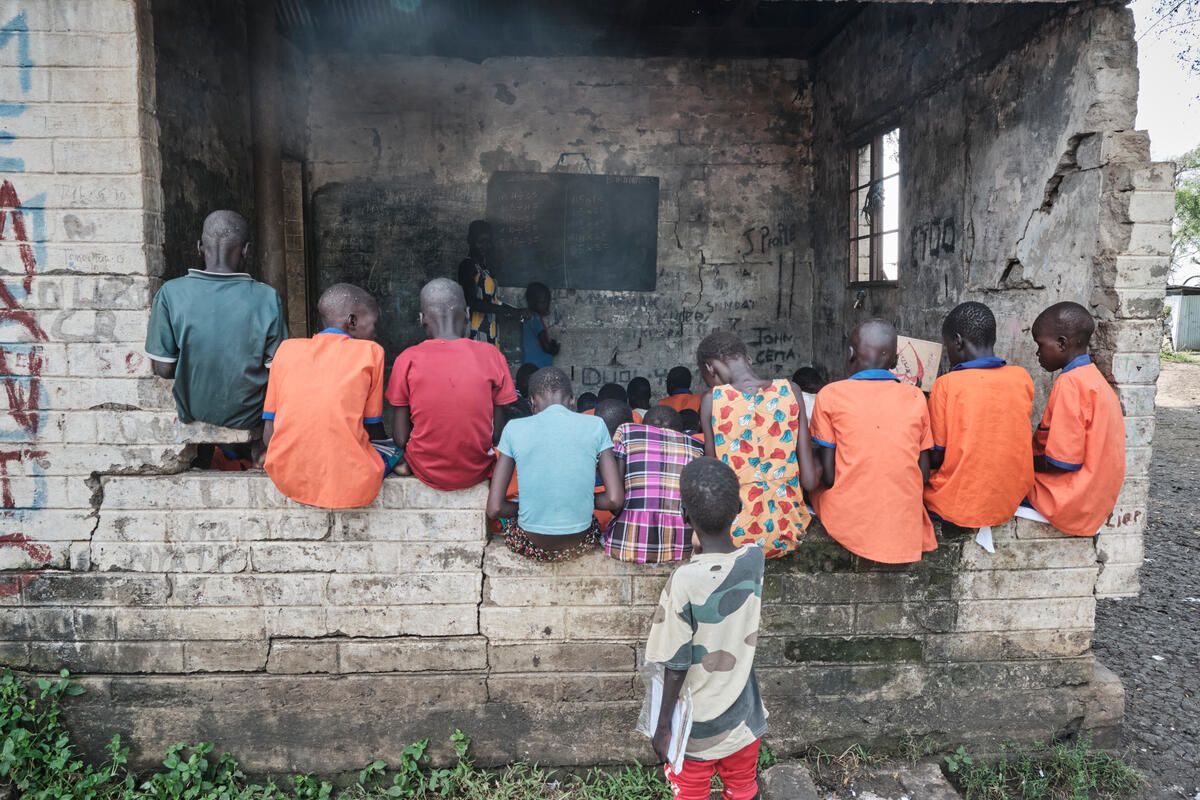
Save the Children is privileged to be a part of Domaac's story - and those of thousands of reunited families.
Every minute, every day, all around the world. Our proudest moments are theirs.
*names changed here to keep them safe.
This scrolling story is based on an original version produced by Save the Children Norway.
